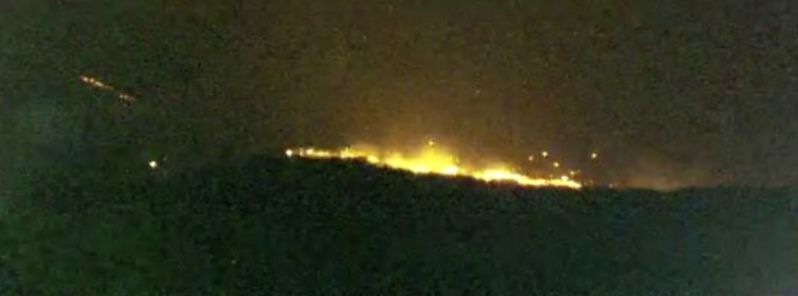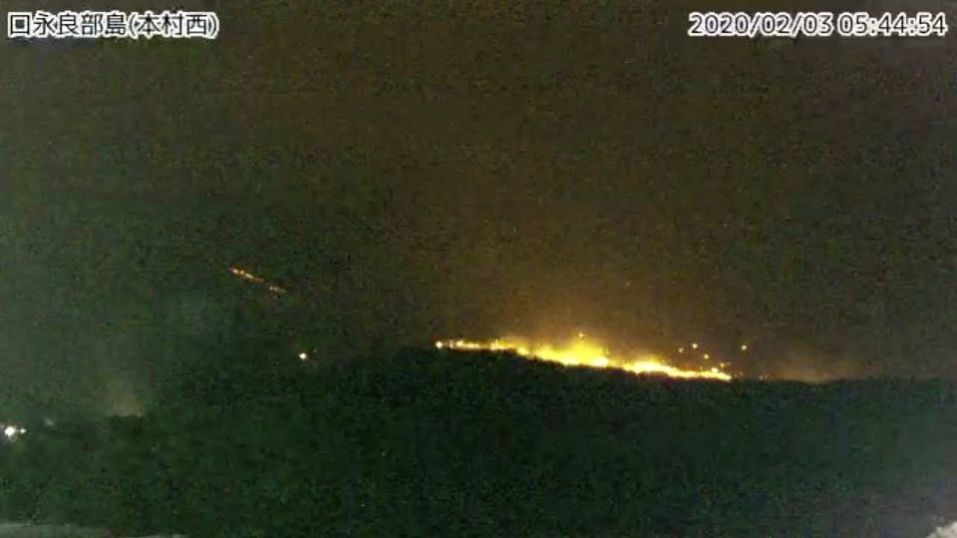Kuchinoerabujima erupts, generating long pyroclastic flows and ejecting ash up to 7 000 m (23 000 feet) a.s.l., Japan

Kuchinoerabujima volcano in Kagoshima Prefecture, Japan erupted early Monday, February 3, 2020, ejecting volcanic ash up to 7 000 m (23 000 feet) above sea level.
According to the Japan Meteorological Agency (JMA), pyroclastic flows — the first since January 29, 2019 — traveled around 900 m (2 953 feet) southwest of the crater.
Authorities said the eruption threw volcanic material some 600 m (2 000 feet) around the crater, but no injuries have been reported. Damage to properties is yet to be confirmed.

Image credit: JMA
The Alert Level remains at 3 (on a scale of 5) since 15:15 UTC on October 27, 2019 (00:15 JST, October 28), after a large earthquake hit the island.
"There is a possibility that an eruption will occur of a magnitude similar to the one in January when pyroclastic flows reached a point 1.9 km (1.2 miles) from the crater," JMA said at the time.
Kuchinoerabu Island, which is around 130 km (81 miles) south-southwest of Kagoshima city, covers an area of 36 km2 (14 mi2) and is home to 100 people as of December 2019.
Explosive eruptions in May 2015 forced all islanders to evacuate to Yakushima island– 12 km (7 miles) east. Eruptions in 1980 and 1933, destroyed a village, killed up to eight people, and affected 26 others.
口永良部島の噴火の瞬間の動画です。気象庁の高感度カメラには、噴火の様子が写っています。#鹿児島 #口永良部島 pic.twitter.com/rFmKe2U0Cr
— MBCニューズナウ (@MBC_newsnow) February 2, 2020
Geological summary
A group of young stratovolcanoes forms the eastern end of the irregularly shaped island of Kuchinoerabujima in the northern Ryukyu Islands, 15 km (9.3 miles) west of Yakushima. The Furudake, Shindake, and Noikeyama cones were erupted from south to north, respectively, forming a composite cone with multiple craters.
The youngest cone, centrally-located Shintake, formed after the NW side of Furutake was breached by an explosion. All historical eruptions have occurred from Shintake, although a lava flow from the S flank of Furutake that reached the coast has a very fresh morphology.
Frequent explosive eruptions have taken place from Shintake since 1840; the largest of these was in December 1933. Several villages on the 4 x 12 km (2.5 x 7.5 miles) island are located within a few kilometers of the active crater and have suffered damage from eruptions. (GVP)
Featured image credit: JMA

This is only the tip of the iceberg. As, I stated previously, so many volcanoes will erupt in Japan this year and also massive earthquakes will take place.